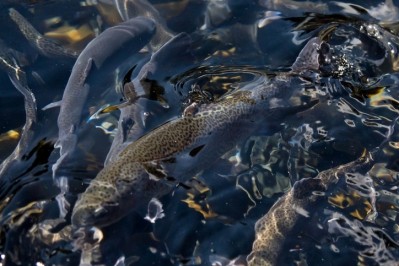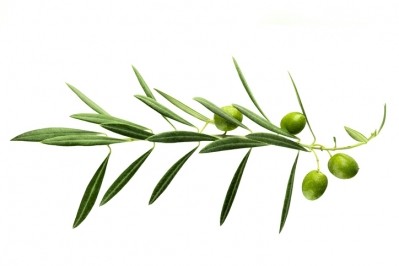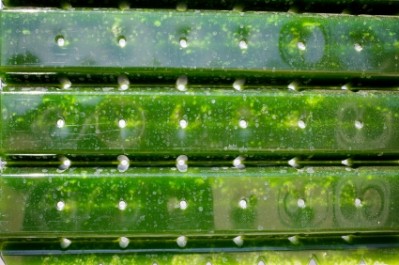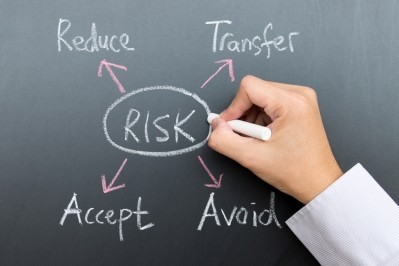Aquaculture venture raises fish on alcohol production by-products
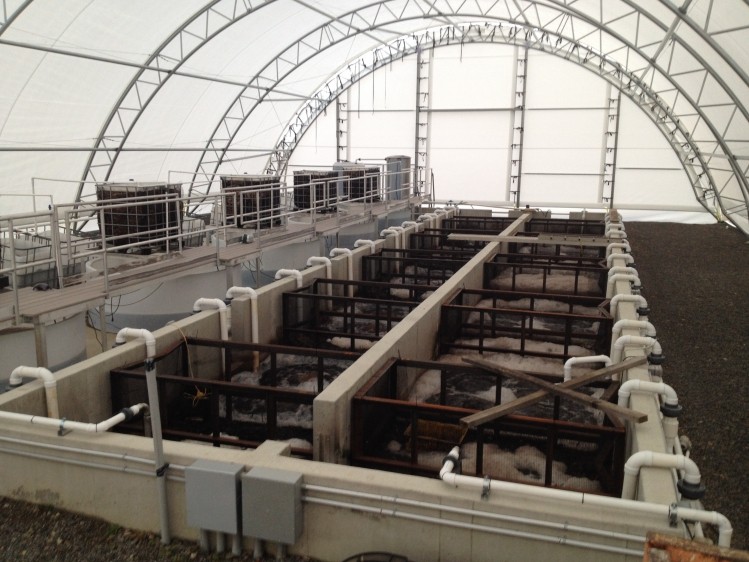
The partnership between the New York-based brewery and distillery and Timberfish started with a serendipitous meeting, said Jere Northrop, managing partner with Timberfish.
“This technology allows you get non-agricultural land into production and use by-products,” he told FeedNavigator. “It diversifies the food chain, and incentivizes the use of [byproducts].”
The reuse of the production materials also allows the distilling and brewing facility to improve its environmental footprint, said Mario Mazza, general manager and enologist for Mazza Vineyards and Five & 20.
The site was able to incorporate plans for Timberfish into its own construction project, he told us.
The novel fish feeding, production and water cleaning system located on the Five & 20 Spirts Brewing facility was stocked with four kinds of fish earlier this year, said Northrop. It is raising largemouth bass, yellow perch, channel catfish and rainbow trout.
The initial system is raising about 1,000 to 5,000lb of fish but the eventual goal is to expand it in coming years so that it generates about 20,000-25,000lbs of fish, he said.
“It’s a preliminary shakedown, the first are three warmer water and the trout colder water [species],” he said. “This is our first commercial production facility – it’s a learning curve.”
Eventually, the aquaculture and wastewater-recycling center on the site of the distillery and brewing facility is set to become the company’s research and development location, he said.
Fish feeding systems
The Timberfish recycling system uses the wastewater and byproducts generated by the brewing and distilling process to feed the fish raised by the system, said Northrop.
“We started last year with a large tank with a partition in the center – we built a pad alongside it for smaller tanks and to do demonstrations and R&D,” he said. “That’s where the fish are right now, in tanks on the pad and they will move into the larger zones – it was all designed as a wastewater treatment system to produce the foods – and then the fish.”
The water flows into the system and is separated into solids and liquids, he said. The system has a series of water zones and areas where the water is filtered through woodchips as part of the cleaning process.
“The initial treatment goes into a liquid zone, then water flows through the chips and then it alternates five chip zones and then seven water zones,” he said. “The solids will be on top of the woodchips and [water] will irrigate onto the tops as well, which prompts extensive bacterial growth and makes a microbial biomass, and [we’ll] have a large population of invertebrates eating the microbes and then it will be sent to the second chain.”
Solid matter left over from the process of making alcohol goes on top of containers of woodchip that are also used to grow microbial biomass and invertebrates that can then be eaten by the fish being raised in the system, said Northrop. “We’re taking all the distillate and wash water from the distillery and the wash water from the brewery and we will be taking the spent distillers grains,” he added.
“We try to set our environments so the fish can feed themselves,” he said. “For example, over the circular fish tanks we have a four-foot cube full of wood chips and we take water from the fish tank and filter it through the chip basket. It grows microbes and invertebrates and as they get large they drop in the fish tank.”
“We try and set it up so there’s no microbial harvesting, we rely on the mobility of the microbes and the invertebrates to feed the fish,” he said.
Although the initial recycling system will be using spent grains and wastewater to generate the feed for the fish produced, the system also can use commercial aquafeed if it doesn’t include fishmeal or oil, he said. “We have the ability to take most of energy source and nutrients from the distillate, but we have a third source that we can use – we can feed a commercially available aquaculture feed to the fish,” he added.
The recycling system would improve the feed use efficiency, as wasted nutrients would again be used to generate microbial biomass and invertebrates, said Northrop.
When the water is eventually discharged from the filter and fish production system it has to meet permitted standards, he said.
Production partnership and development
Taking part in the recycling system allows the brewery and distillery to reduce the waste it producer, said Northrop. The company does not have to truck its waste to a wastewater treatment center.
“Economically it saves them money and us money – we don’t have to buy feed and by generating fish it’s a marketable product,” he said. “This is kind of an ideal system.”
Five & 20 started planning the move to its 120-acre location several years ago, before it had heard of Timberfish, said Mazza.
“It wasn’t something on our radar,” he said. “We knew there were going to be by-product stream issues.”
The site also has a restaurant that intends to serve the fish produced, he said. “It allows us to tell the story and there’s an experiential [element] for people to be able to see the grain grown,” he added.
“We can show that and show beyond just the production and the agriculture – to how we’re utilizing the value-added product or our byproduct material,” he said.
FeedNavigator is running an event in March in Amsterdam on feed protein innovation. Check it out here.
